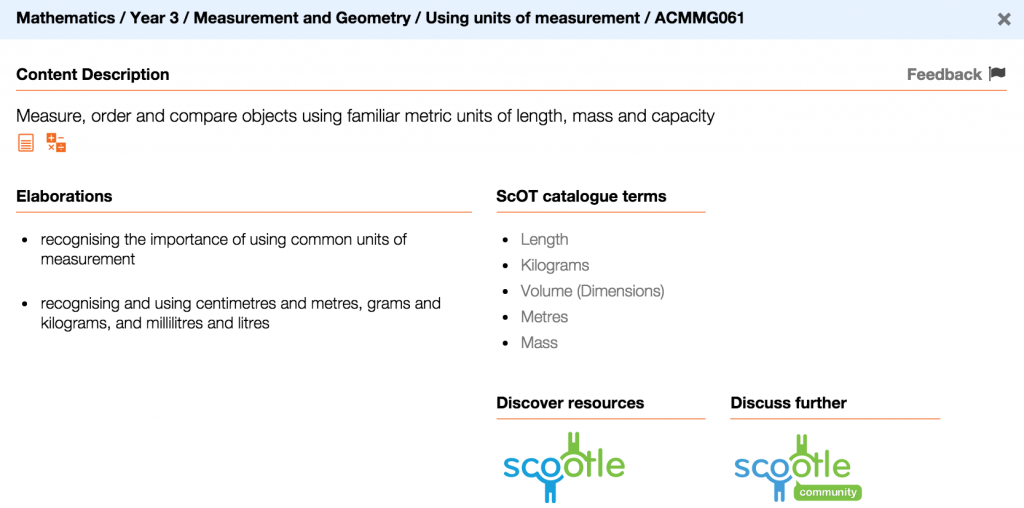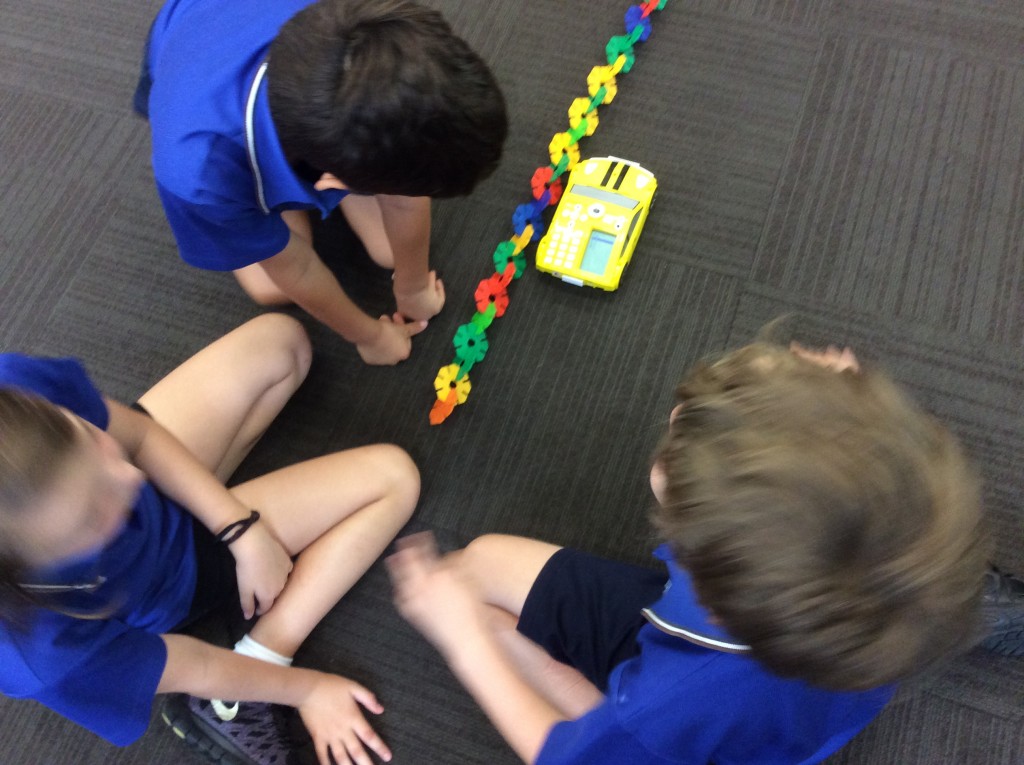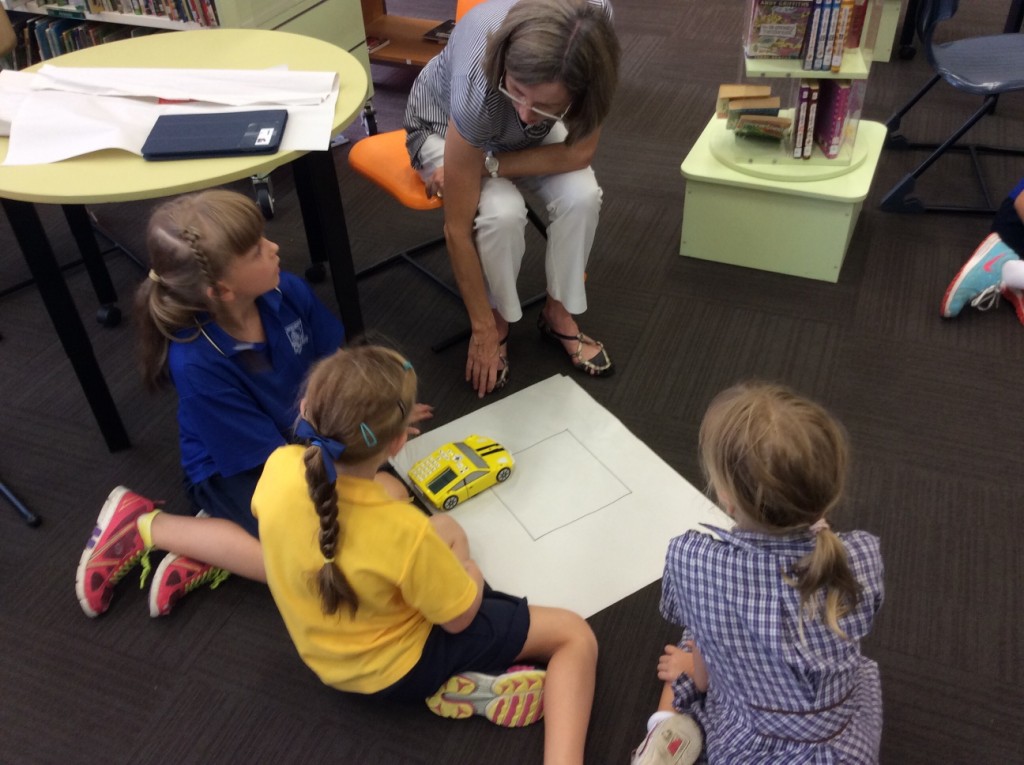The Year 3 students have been working on measurement and in particular – the metre unit. During the week leading up to the lesson, they had made metre lengths from non-standard units – using construction materials, paper or ribbon. The elaborations from ACARA on this area of mathematics appear below:

Students in Year 3 need to be measuring, ordering and comparing objects using this metric unit and so the first step is that students need to become very familiar with what a metre is. Mrs Spencer and I wished to support this level of understanding whilst delving into the Digital Technologies curriculum at the same time.
- calculating it in their head.
- predicting and testing and trialling
- inputting far too many and then counting how many it took.

We then talked about the next task which was to make the bot travel a meter but then to do a ‘u-turn’ and come back a metre so it ended up in the place from where it started. Some students found this easy and others had to work a little harder. It was great to have an opportunity to promote problem solving and resilience during this section and then to be able to tie it to computational thinking. We were given one program which was incorrect and as we watched it – we all saw this. But, as teachers, we were able to jump in and congratulate the child on giving us an opportunity to ‘debug’ the program -that is, to work it out, fix it and try it again. I enjoyed this aspect immensely as some children are so averse to making mistakes. I love that part of the mindset of computational thinking is that children need to be able to work together, problem solve, debug and try it again.
We also looked at the carpet squares on the floor, realising they were 50 cm squares. This gave us an opportunity to be ‘student bots’ and navigate our way around the room following my instructions.
Finally, we talked about locations and used a very large grid on cardboard. We then worked on navigating from one location to another. We took this slowly and moved the probot as we said the instructions together. The children were then sent off to place locations and work on programming.

